6 Expensive Types Of Beef Beyond Kobe
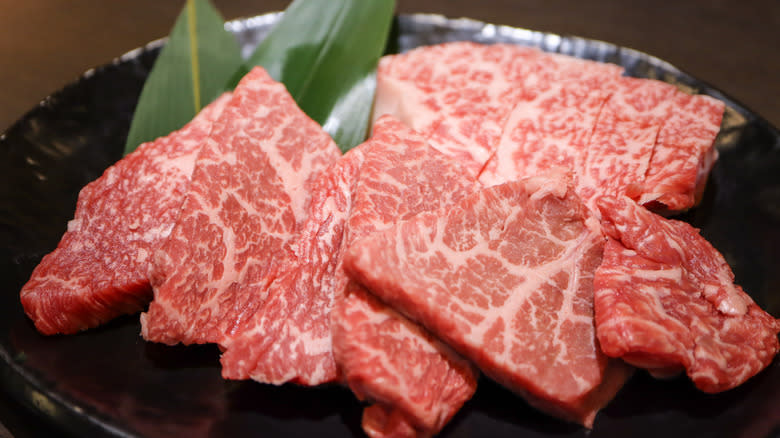
True Kobe beef from the Hyogo Prefecture in Japan is expensive, priced at more than $700 per pound for a cut of tenderloin. From the intricate, almost baroque marbling to the buttery, melt-in-your-mouth experience to the tenderness and subtle umami notes, Kobe beef is the brightest star in the constellation of ultra-costly steaks. While Kobe beef might be the most famous of the world's pricey types of beef, six other lesser-known candidates — five more from Japan and one from France, give it a run for its money.
There's a certain irony in the fact that Japan, a relative newcomer to the world of raising cattle for beef, dominates the category of the world's priciest cuts. It wasn't until the late 1860s that cattle in Japan began transitioning from the almost-exclusive role of durable workers to meticulously raised and bred sources of world-class beef. From Japan's sublime olive Wagyu to its ethereal and elusive Murasawa beef, the five most expensive types of beef in Japan all come from one line of Wagyu (literally "Japanese cow") — the kuroge, or Japanese black cow.
France's entry on this list, a cut of vintage cote de boeuf from a herd of blonde d'Aquitaine cattle in the country's northeast, comes from one butcher who, like generations before him, raises his cattle in "five-star accommodations," according to CNN.
Read more: Your Guide To The Different Cuts Of Steak
Olive Wagyu Comes From Cows Raised On Toasted Olives
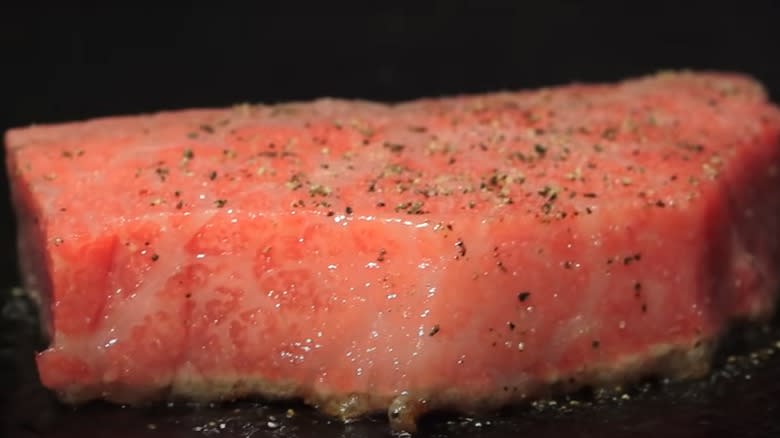
Like Kobe beef, olive Wagyu comes from the highly-desired kuroge genetic line of Japanese cows. But, unlike the Kobe area, with its direct lines of transport to major markets like Osaka and Tokyo, olive Wagyu is raised and bred across the Seto Inland Sea in tiny Kagawa Prefecture. For decades, this barrier to distribution kept olive Wagyu's sublime marbling and incredible flavor a secret.
This all changed when local cattle farmers took advantage of another of the prefecture's exports — olives. A unique, almost Mediterranean micro-climate characterizes this coastal, windswept region, making it the only area in all of Japan where olives not only grow but thrive. Olives are an excellent source of oleic acid, and Kagawa's cattle farmers knew that high levels of oleic acid in their beef translate to incredible, lacy marbling and a much lower melting point than less-marbled beef. And this lower melting point lends an almost silky texture to every tender bite.
With access to discarded olive mash from local producers, Kagawa's cattle farmers set about finding a way to make the mash palatable to their herds. Raw olive mash was too bitter, but mash left out to toast in the summer sun sweetened and mellowed, making it a treat for the cows and a catalyst for some of the world's best beef.
Rich with a distinctive umami flavor, olive Wagyu can top $500 a pound.
Murasawa Beef Is So Hard To Find, It's Known As Phantom Beef
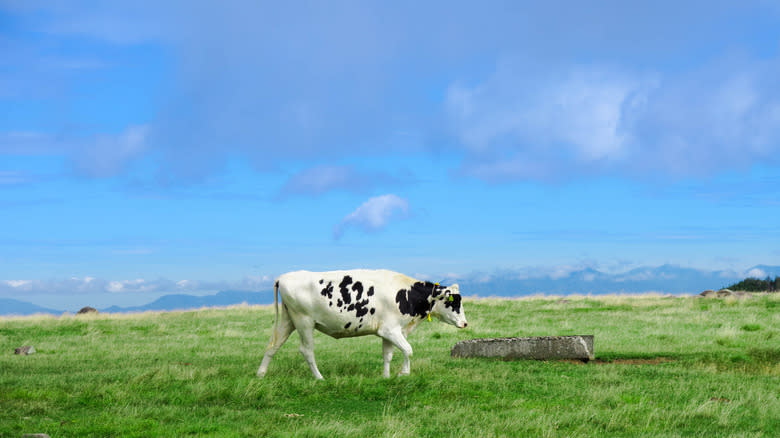
When a type of beef is as hard to find as Murasawa Wagyu, it's only fitting that it would come from Nagano Prefecture, a mountainous region riddled with hard-to-find farms and hamlets. Nagano's Murasawa Farm, the source of Murasawa Wagyu, makes only 80 cattle available to the market each year. This rarity plays a part in bestowing mythical status on what some call phantom beef.
Also from the kuroge line of Japanese cattle, Murasawa features the same buttery tenderness the line is known for. Careful tending of the small herd is a round-the-clock job, but the payoff is a cut of beef with marbling so fine and extensive that thin slices of sirloin appear almost white before they're cooked.
There's a refinement to the delicate fats in a rare (pardon the pun) piece of Murasawa beef that leaves one pleasantly satisfied with the rich flavors and softness but not feeling heavy or full. Only a type of beef as magically delicious as this could pull off such a trick.
When Murasawa beef can be found on the menu, it will typically cost about $150 a pound.
Matsusaka Ushi Actually Get Beer And Massages
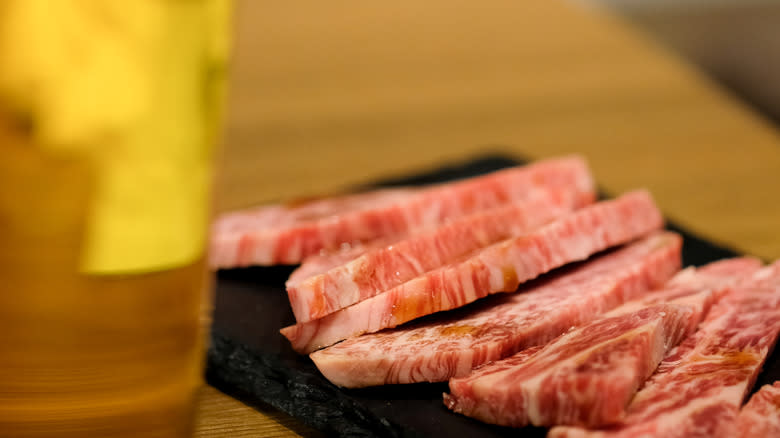
In Matsusaka city lies what is unromantically referred to as the Matsusaka beef production area. This less-than-glamorous name belies the region's natural beauty, intertwined with fresh springs and rivers and the beautifully caring way that the area's farmers raise their cattle.
The breeding and raising of Matsusaka ushi (meaning cows) is the domain of the region's master cattle farmers. The always-important fattening process is key to achieving the fat content and flavor that are hallmarks of this beef. Each master cattle farmer relies on their own tricks of the trade to reach optimal fat percentages.
Some may be familiar with the legends of Japanese cattle brought up pampered by gentle strains of classical music, sake massages, and sips of beer. Matsusaka comes close. It is common practice for cattlemen to give beer to cows that might be in need of appetite stimulation. Massage of individual cows also sometimes occurs here, with caretakers hoping to stimulate appetite and create a sense of comfort and trust, which they believe reduces flavor-killing stress.
Secret recipes for optimal feed, individual barn rooms for each cow, fans and sprinklers turning on when it's hot — it happens with Matsusaka cows, and this painstaking care shows in the amazing beef produced here.
Matsusaka beef can go for more than $160 per pound.
Yonezawa Beef Relies On A Diet Of Mineral-Rich Rice To Reach Elite Status
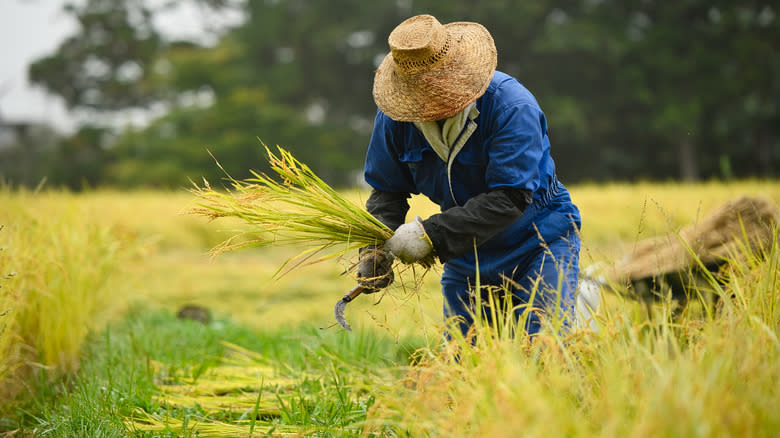
Traveling further north than any Japanese regions mentioned so far, you'll find Yamagata Prefecture. It is here that Yonezawa beef is raised. Yonezawa beef might be the most versatile of Japan's expensive beef types.
While many of the other options we've looked at are primarily served as steaks, Yonezawa beef is often enjoyed thinly sliced in a noodle-filled bowl of savory sukiyaki, Japan's popular hot pot offering. Shabu shabu is also on the menu if your Yonezawa beef is paper-thin and ready and waiting to be dipped into a hot broth of soy sauce and citrus.
But Yonezawa can also shine when served as steaks, too. A simple preparation of salt and pepper, a hot grill or griddle, and soy sauce bring out the steak's juiciness and richness.
The soil found around Yamagata Prefecture is rich in minerals, and this local abundance is transferred to the cattle through a 32-month diet of regional rice straws, providing optimal nutrition.
Yonezawa beef comes in at $100 per pound.
Akita Beef Comes From A Region Originally Famous For Its Delicious Rice
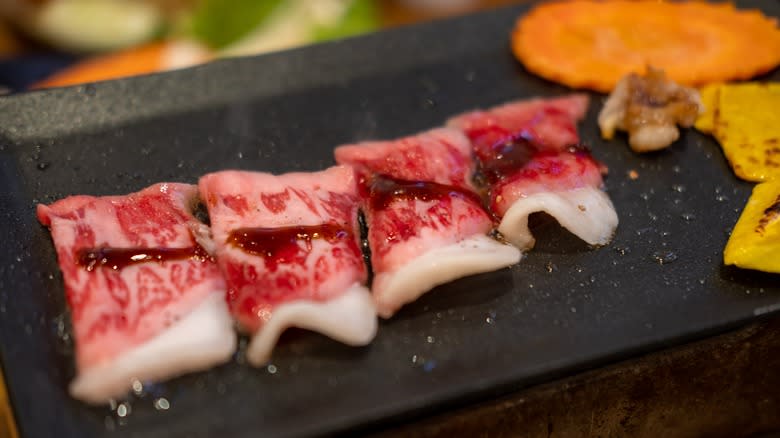
Debuting as an officially recognized variety of kuroge beef just 10 years ago, Akita beef is inextricably tied to the rice that has made Akita Prefecture famous throughout Japan. Akita Komachi, the main local rice brand, is known for its signature blend of chewiness, stickiness, and balanced sweetness.
Kuroge cattle raised in Akita Prefecture are held to high standards. One of those standards requires a diet for the cows consisting of an approved percentage of local rice. This rice-heavy diet imparts a tenderness to the beef and contributes to the melt-in-your-mouth experience that so many beef lovers crave. The locals claim that their famous rice also brings a distinct juiciness to the beef, helping disperse the rich flavors found in each bite.
A pound of Akita beef will set you back about $400 per pound.
France's Vintage Cote De Boeuf Comes From Just One Butcher
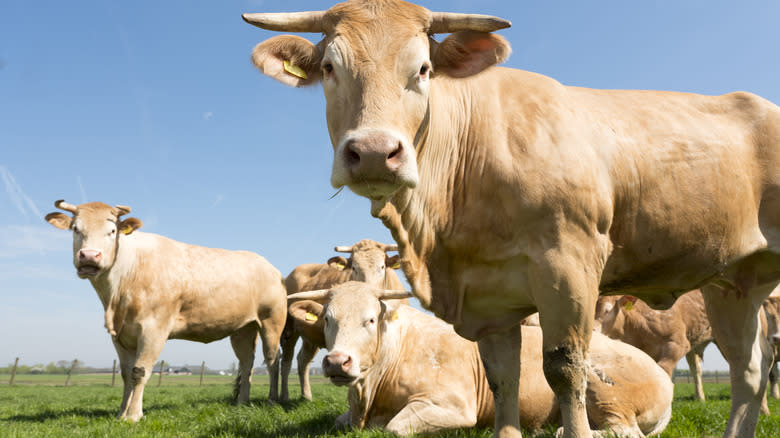
And now, we come to a cut of beef from France more expensive than any discussed so far. One butcher, Alexandre Polmard, in Lorraine, France, is the purveyor of this ultra-pricey, vintage cote de boeuf. And, as the name implies, Polmard's beef, like France's fine wines, is sold by vintage.
Three key factors go into the creation of this amazing beef. The first is the breed of cattle. Here, it's the blonde d'Aquitaine breed, a toasted vanilla-colored herd that roams free in lightly wooded grasslands that resemble a park.
Next is the "hibernation" preservation method, which is what allows the beef to be sold in vintages. Created by Polmard's dad and grandfather in the 1990s, "hibernation" subjects the freshly dressed beef to an extremely cold, continuous flow of air, moving at more than 120 kilometers per hour to keep the beef in a kind of stasis for as long as needed, but always tasting perfectly fresh when prepared.
The third component is keeping the cows stress-free. Polmard talks to each and every cow individually to minimize stress levels, which shows in the flavor of the final product.
Marbling here is almost nonexistent, with the flavors showing a slight succulent acidity and world-class tenderness.
Back in 2017, the 2000 vintage cote de boeuf might've cost you more than $3,000.
Read the original article on Tasting Table.


